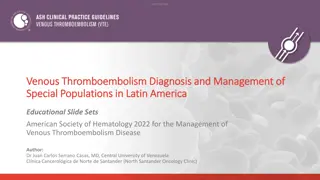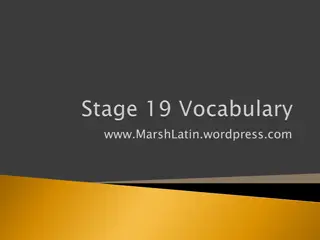Exploring Latin America: History, Culture, and Challenges
Discover the rich history and cultural diversity of Latin America through insights on the Spanish attitude towards Aztec culture, the establishment of maquiladoras in Mexico, the unique settlement patterns in the Caribbean, the dominant economic sectors in Central America, and the impact of immigration on Brazil's ethnic makeup and socio-economic challenges.
Download Presentation

Please find below an Image/Link to download the presentation.
The content on the website is provided AS IS for your information and personal use only. It may not be sold, licensed, or shared on other websites without obtaining consent from the author. Download presentation by click this link. If you encounter any issues during the download, it is possible that the publisher has removed the file from their server.
E N D
Presentation Transcript
Mexico (p. 217-221) What was the Spanish attitude toward Aztec culture? What are the maquiladoras?
The Spanish did not respect Aztec culture, and destroyed much of it. They are factories in Mexico, often located along the U.S. border, that assemble imported materials into manufactured goods for export.
Central America and the Caribbean (p. 222- 229) In terms of who settled there, how is the Caribbean different from Mexico and Central America? Which two parts of the economy provide most of the income in Central America and the Caribbean? What are some of the most important export crops in the region?
The Caribbean had settlers from many countries in Europe, while Mexico and Central America had settlers mostly from Spain. Agriculture and tourism Bananas, coffee, sugar cane, citrus and spices
Spanish-speaking South America (p. 230-235) Which countries are full members of Mercosur? Which countries have literacy rates higher than 90 percent? What happened to the Inca language after the Spanish conquest?
Argentina, Brazil, Paraguay, and Uruguay Argentina, Chile and Uruguay Quechua is still spoken by millions of people in the Andes.
Brazil (p. 236-241) What is the ethnic makeup of Brazil? What are some of the darker aspects of life in Brazil today?
Brazil has taken in immigrants from around the world, including people from Portugal, Germany, Italy, Spain, Lebanon, Syria, Japan and Africa. Poverty, Slums, crime, drugs
Critical Thinking #1 a. Which two European countries colonized most territory in Latin America? answer: Spain and Portugal b. What are some of the ways in which Latin America is developing economically in recent years? answer: maquiladoras in Mexico, the exploitation of resources in Brazil, tourism in the Caribbean, and the industrialization of subregions.
Critical Thinking #2 a. How has the Amazon River been used and developed? answer: Power plants along the river produce electricity. b. What has restricted the movement of people from the coast of South America into the interior? answer: mountains and dense rain forests
Critical Thinking #3 Interaction between European powers and native peoples occurred throughout the region. What are some of the consequences of this interaction? Which of the five themes are reflected in your answer? answer: The destruction of the cultures of the native peoples, with the language and religion of European countries becoming dominant in the region. Region is the theme that best applies.
Critical Thinking #4 What are some ways individual citizens of Latin America are working to improve their economic situation? answer: moving to the cities in search of better jobs, getting training and education, looking for work in tourism and other growth industries, participation in the informal economy, and taking jobs in factories.
Critical Thinking #5 How are Spanish-speaking and Portuguese speaking South America alike and different? answer: Both were settled by people who came from a dominant country in Europe. Both have become more diverse over the years. However, Spanish-speaking South America is divided into a number of countries, which Portuguese-speaking South America is composed of Brazil only.























